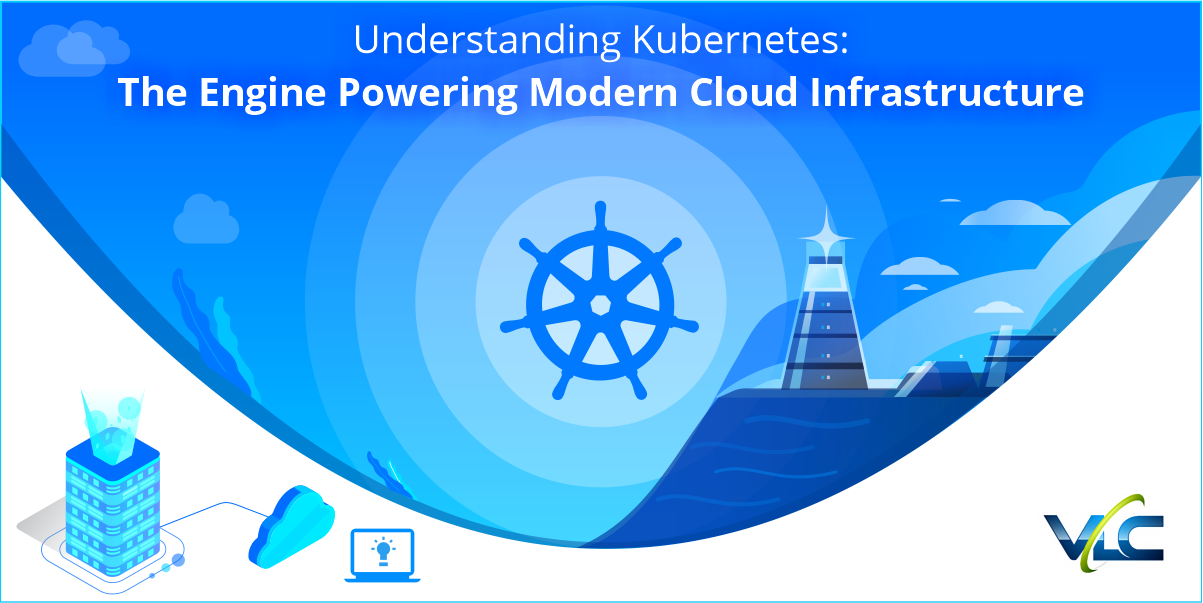Understanding Kubernetes: The Engine Powering Modern Cloud Infrastructure
Getting to know Kubernetes, the bedrock of modern cloud infrastructure, is essential in today’s rapidly developing tech terrain. As businesses run with the complexities of cloud computing, Kubernetes stands out as a critical tool. This blog helps delve deeper into the essence of Kubernetes and its key role in shaping the digital era.
What is Kubernetes?
Kubernetes was born out of Google’s internal container orchestration system, and emerged as the industry standard; it can be defined as an open-source container orchestration platform that helps automate the deployment, scaling, and management of containerized applications, ensuring seamless operation across diverse environments.
The Evolution of Containerization:
Containerization revolutionized software development by encapsulating applications and their dependencies, enabling portability and consistency across environments.
Exploring Kubernetes Architecture: Behind the Scenes
Understanding the Kubernetes architecture is essential. Here, we take a closer look at the key components of this powerful orchestration platform and how they work together to streamline containerized application management.
Master Node: The Brain of Kubernetes
At the heart of Kubernetes lies the master node, which acts as the control plane. This node orchestrates cluster operations, maintaining the desired state of the system through efficient management of resources and workload distribution.
Worker Nodes: Powering Application Execution
Worker nodes, also known as minions, are responsible for executing tasks delegated by the master node. They host the containerized applications, ensuring their seamless execution and efficient utilization of resources within the Kubernetes cluster.
Pods: The Building Blocks of Kubernetes
Pods represent the fundamental unit of deployment in Kubernetes. These encapsulate one or more containers, along with shared network and storage resources, providing a cohesive environment for running applications within the cluster.
Services: Enabling Seamless Communication
Services in Kubernetes act as an abstraction layer, facilitating seamless communication between various components within the cluster. They provide a stable endpoint for accessing and exposing applications, regardless of their underlying infrastructure.
Controllers: Managing Application Lifecycle
Controllers play a crucial role in managing the lifecycle of applications within Kubernetes. They ensure the desired number of pod replicas are running, handle updates and rollbacks, and maintain the overall health and availability of the application.
The Potential of Microservices with Kubernetes
Embracing Modular Architecture:
Kubernetes empowers organizations to embrace microservices architecture, breaking down monolithic applications into smaller, more manageable components.
Enhancing Scalability and Agility:
Modular microservices architectures enhance scalability, agility, and fault tolerance, enabling teams to innovate rapidly and deliver value to customers at a faster pace.
Facilitating Continuous Innovation:
By abstracting away infrastructure complexities, Kubernetes enables teams to focus on continuous innovation, iterating and deploying new features with ease.
Kubernetes: The Key to Multi-Cloud and Hybrid Deployments
Overcoming Vendor Lock-In:
Kubernetes provides a consistent platform for running applications across diverse environments, whether it’s on-premises data centers or public cloud providers like AWS, Azure, or GCP.
Ensuring Consistency Across Environments:
With Kubernetes, organizations can seamlessly deploy and manage applications in multi-cloud and hybrid-cloud environments, ensuring consistency and minimizing operational overhead.
Simplifying Infrastructure Management:
Kubernetes abstracts away the underlying complexity of infrastructure management, empowering organizations to focus on building and deploying applications without being tied to a specific vendor.
Charting a Course Towards Cloud-Native Excellence: Embracing Kubernetes for Scalability, Resilience, and Agility
Kubernetes represents a paradigm shift in cloud-native application development and deployment, offering scalability, resilience, and agility to organizations of all sizes. As organizations continue to embrace digital transformation, Kubernetes will remain a milestone of modern cloud infrastructure, letting businesses thrive in an increasingly competitive landscape.
